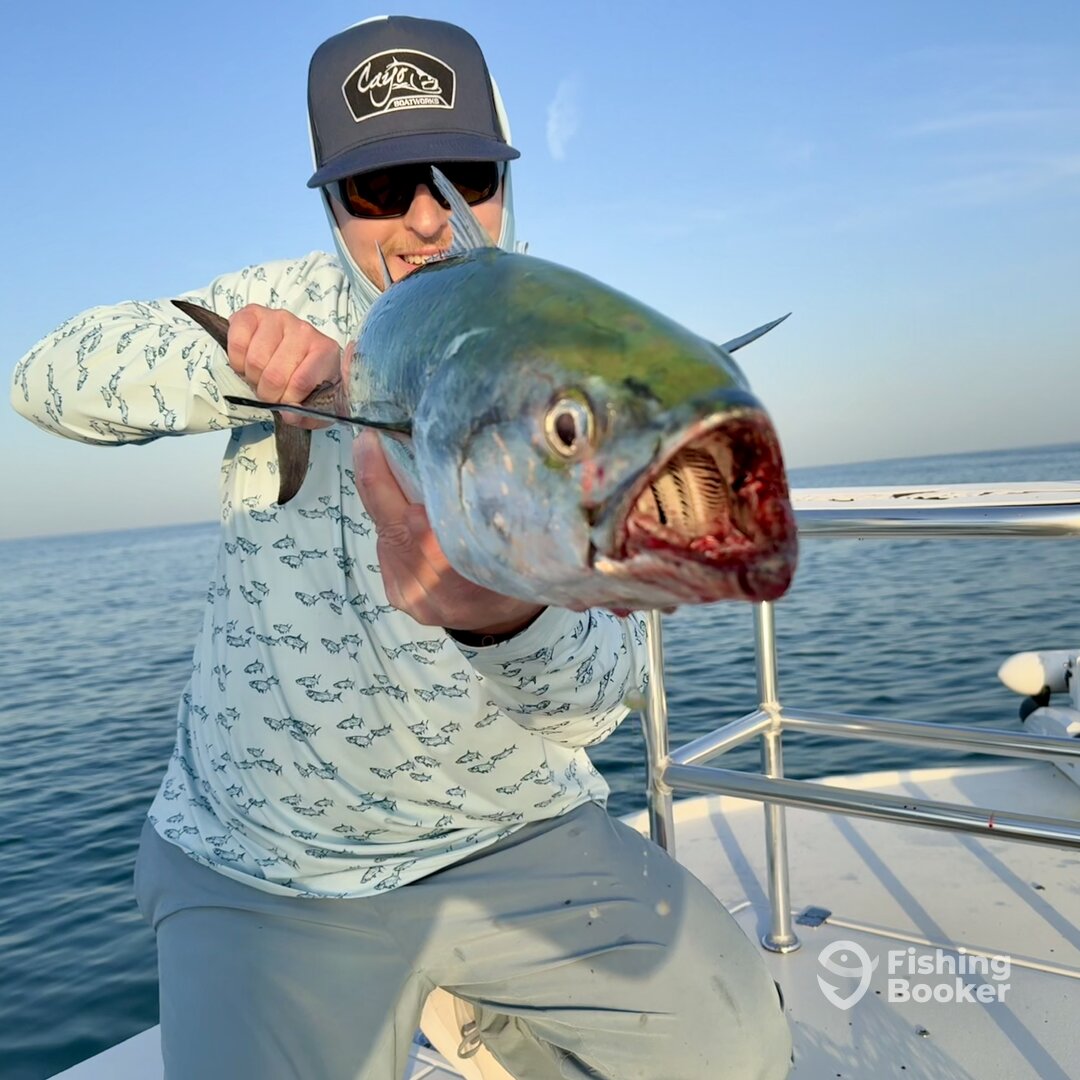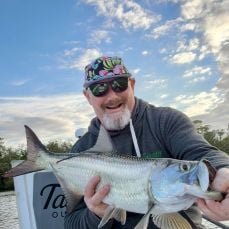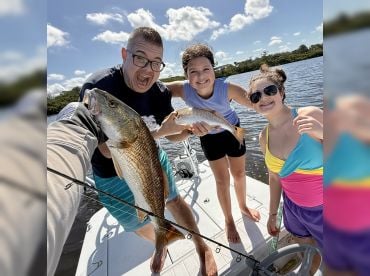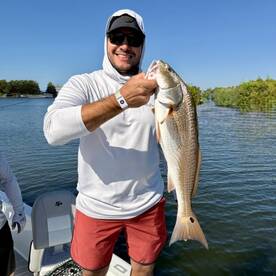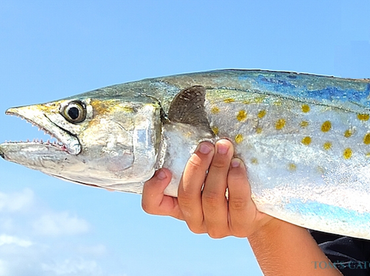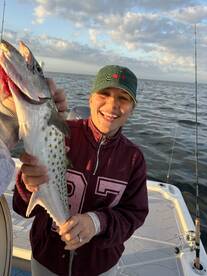October 23rd – Clearwater Inshore Action
October 23,
2025
If you’ve been waiting for fast-paced, non-stop action on the inshore side of Clearwater, your time has come! The fall migration of Spanish mackerel has officially kicked off, and these hard-hitting fish are lighting up the waters along Clearwater Beach, Sand Key, and Dunedin Causeway. Schools of bait are pouring through the passes, and the macks are right behind them — slashing through pods of glass minnows and whitebait on almost every tide change.
Where to Find the Macks
This time of year, you don’t have to run far to get into them. Look for diving birds, surface splashes, and bait showers anywhere from Clearwater Pass up to Honeymoon Island. Spanish mackerel push close to shore chasing baitfish, often holding near channel markers, range towers, and just off the beaches in 6–20 feet of water.
When the tide’s moving, you can even find them mixed in with ladyfish and jacks on the same flats we’ve been trout fishing. On a 4-hour Clearwater charter, we often combine both — working the inshore grass flats early, then sliding out to the passes when the tide starts pulling the bait out. It’s a great way to stay on the action all morning.
Lures and Techniques:
For Spanish mackerel, it’s all about flash, speed, and movement. These fish are built for chasing down fast-moving prey, so your lure choice and retrieve make all the difference.
Spoons: A 1/2 oz silver or gold spoon is hard to beat. Cast long, let it sink a second or two, then burn it back just under the surface. The flash mimics fleeing baitfish perfectly and triggers aggressive strikes.
Casting Jigs: White, chartreuse, or silver casting jigs and Gotcha plugs work great when mackerel are busting bait near the surface. The key is a fast, steady retrieve — if you think you’re reeling too fast, go faster.
Wire or Fluoro: These toothy fish can slice through light leaders, so step up to a short section of 30–40 lb fluorocarbon or use light wire if you’re getting cut off too often.
When they’re thick, double hookups are common, and the drag-screaming runs will keep even experienced anglers smiling all day.
Gear Breakdown:
Our Clearwater mackerel setups are light but tough enough to handle the chaos:
Rod: 7’ medium Shimano spinning rod
Reel: 4000-size Shimano reel with smooth drag
Line: 15–20 lb braid
Leader: 30–40 lb fluorocarbon or short wire section
Lures: Silver spoons, Gotcha plugs, or bucktails
This setup allows long casts to reach busting schools while still keeping the fight sporty and fun.
Hot Tip: Watch the Birds
When you’re on the water, keep an eye out for diving birds. Gulls and terns feeding frantically on the surface usually mark the mackerel bite below. Move quietly upwind or uptide, kill the motor, and drift down through the school making long casts. You’ll know immediately when you’re in the zone — the hits come fast and furious.
Book Your Clearwater Fishing Charter
The Spanish mackerel bite is one of the most exciting fisheries of the fall season, and it’s perfect for families and beginners. The action is visual, the fish fight hard, and there’s never a dull moment. Our 4-hour Clearwater fishing charters are designed to make the most of this bite, with plenty of chances for photos, fillets, and memories that last.
As always, we provide all Shimano gear, lures, and tackle, so you just bring sunscreen, a hat, and a smile.
Don’t forget to sign up for our email list on the website for fishing updates, seasonal specials, and early booking for the upcoming winter inshore trips!
Next Week’s Preview
Next week, we’ll take a look at late fall nearshore fishing as the kingfish run heats up just off Clearwater Beach — bigger fish, heavier gear, and some serious drag-pulling excitement you won’t want to miss!
Continue reading
